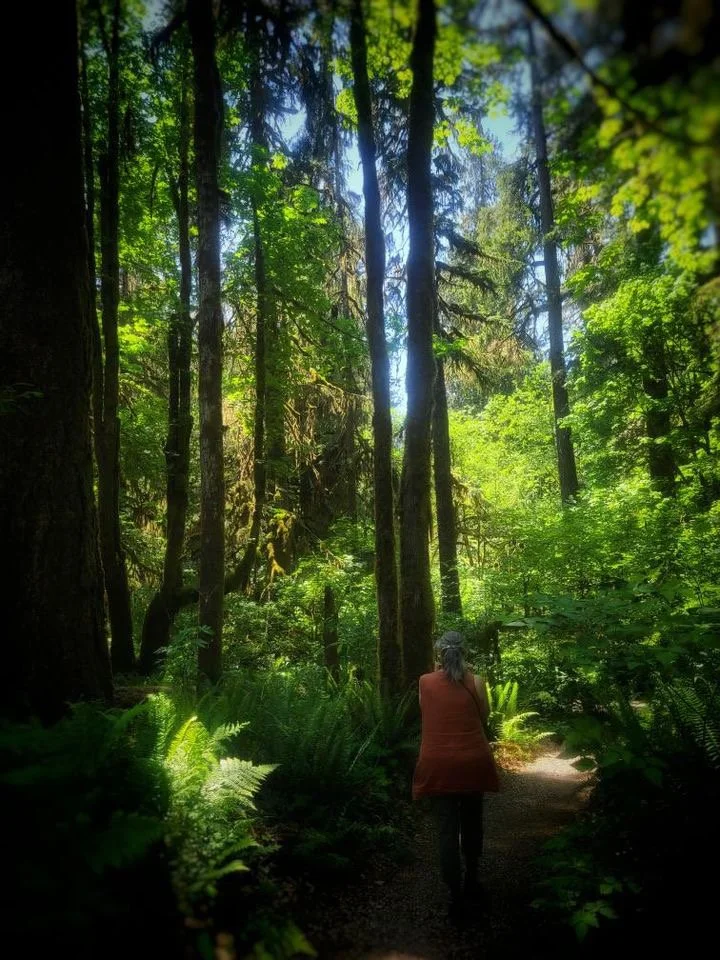Wildcrafting vs. Gardening
/If I had to pick one- I'd say I am a gardener over a wildcrafter. I like to have the plants close to me all the time, like a trusted friend or sibling. But when I am in the forest, I feel like I am a wildcrafter or, as a friend coined the term, wildtender. Lucky for me, I don't have to choose. I get to have both.
If I had to describe the energetic difference between wildcrafting and gardening, I’d say wildcrafting is a bit more sacred. I tend to move slower and with a bit more intention while wildcrafting. The plants are my friends in the wild, but they are a bit more like visiting Elders as opposed to the siblings I visit in the garden.
I've read the fad guidelines on the internet for wildcrafting. Some are based on numbers…"Take one for every 20 flowers!” or, “Only harvest 30% of a field or harvest site.” I like numbers but they don't hold a space with me when I'm out harvesting. I prefer to be more in tune with the habitat and the needs of my communities (both human and plant communities alike.) I pay close mind to what part of the plant I'm gathering and what I need for this moment or for the year.
Another wildcrafting rule I'm not too fond of is “____ is the best time of year to harvest the root, the leaf, and the flower.” I'm not saying there isn't an optimal harvest time but in the words of herbalist Adam Seller, I often answer the question of when is the best time to harvest with, "when you're there."
I cannot imagine my ancestors needing a plant for healing right then and there and discounting its actions because it was the wrong time of year. Or finding a beneficial plant high up a mountain they will never climb again and walking away empty handed because the plant is in flower and they needed the root.
As a gardener, I get to create the landscape. Sometimes it’s for the beauty and art. Sometimes it’s for necessity and science. Other times, it's like setting the table for a dinner party where I get to seat my best friends at a long table and watch them enjoy.
When I left Alaska and I bought land on Whidbey Island, I was the first certified organic grower of herbs and medicinal plants in Washington State. This was before you could go and buy Organic fertilizer. Herbal medicine at that time, in the 90’s, we were all about this Herbal Renaissance. Like now. So it comes and goes in waves!
Even in Fall and Winter, I love to plan next year’s garden ahead of time. Looking and planning for next season’s bounty is a great way to brighten up your mind during the long grey months. Choosing plants to grow in your medicinal herb garden will likely mimic the plants you have in your apothecary. What plants do you and your family need most?
Are you prone to colds and respiratory issues? Plant Echinacea, the Purple Coneflower for its gorgeous flowers and immune boosting properties. It looks great and has similar growing conditions to a number of other respiratory plants, my favourites being Hyssop, Calendula, Mullein and if you have enough room, the spectacular Elecampane.
Need herbal support for pain and inflammation? If you have a sunny space in your garden and even better, poor to sandy soil; you could plant the wild flowers St Johns Wort, Yarrow, Goldenrod and Valerian for a colourful display mid summer and ample plants for pain relieving liniments and salves.
Plants look best when planted in clusters of 3 or 5 and it always makes me smile when I am blending formulas that most are also a blend of three, sometimes 5 plants. Embodied gardeners bring the plants from the garden back to the body through nutrition and as herbalists, medicine. What do you plan to grow in the coming year?
If you are interested in learning more about Wildcrafting and are local to Washington State, join the Wildcrafting Apprenticeship. The Fall Session begins September 212024. For more information, I will be having a Herb School Open House on January 9. Learn more here.

